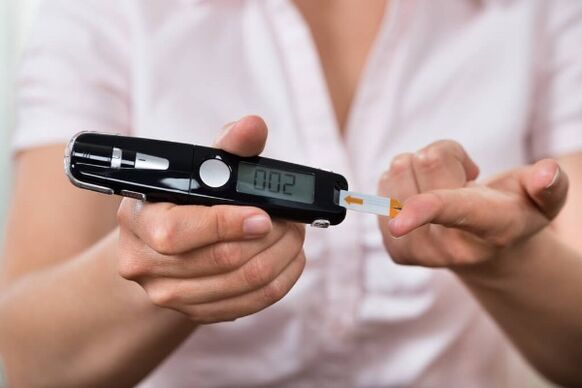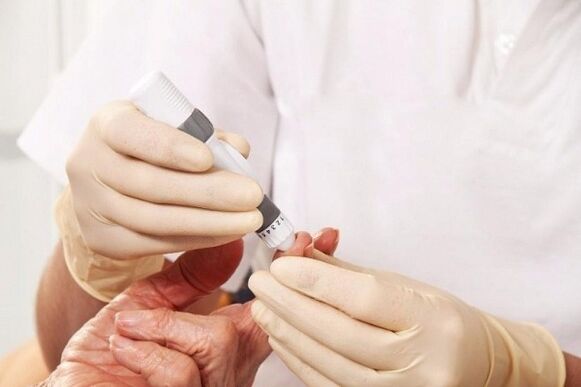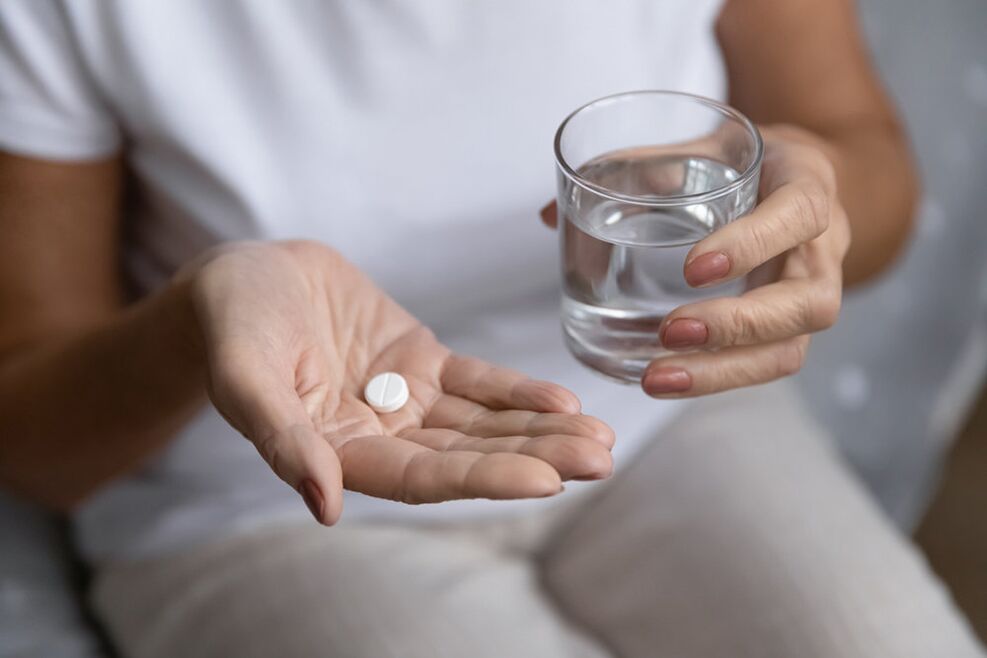
Types of diabetesDiabetic pathology is a collective name for a whole class of diseases. In medicine, it is usual to release diabetes mellitus by type. The terminology itself is represented by a whole list of diseases which have common characteristics. The characteristics of diabetes and species are due to the pathogenic value of glucose in the blood circulation.There are a lot of factors, which is why insulin is unable to provide glucose to blood cells, while the result is always the only one - During a strong blood saturation by sugar, cells are unable to eat normally.When sugar in cells is inappropriate, it is pulled by water. The liquid that fills the blood goes through the kidneys, causing dehydration. Whatever the type of observed sugar disease, the following signs are developing:Dryer in the oral cavity;feeling of thirst;Frequent visits to the bathroom and abundant urine discharge.Various forms of diabetes are characterized by appearance factors, symptoms and therapy methods.
Diabetes classificationHow many types of diabetes sugar exist? First of all, diabetes is distinguished by the type - sugar associated with an increase in sugar and non -Har. And already the type of sugar has certain types of diabetes and their differences. SD 1 form.SD 2 forms.Specific types of pathology.Gestational form.In terms of gravity, diabetes is distinguished by the type:light;AVERAGE;Heavy shape.Regarding the state of compensation, they distinguish:paid;undercompensions;Decompensated form of the disease.It is important to consider each type of diabetes and their characteristics.Type 1 diabetes (insulin dependent)The first type of diabetes is generally called autoimmune or viral damage to pancreas that insulin produces. In patients with 1 type of diabetes, insulin is absent or not sufficient.According to statistics, the manifestation of the disease is today among young people. The first form has the following signs:rapid weight loss;thirsty;Frequent toilets are frequent;feeling of hunger;The occurrence of acetone in the urine.The treatment of this variety of pathology implies the introduction of the necessary dosage of the hormone. The remaining therapeutic measures are ineffective. The development of the 1st type of disease occurs due to a genetic factor. In addition, the provocateur is a number of negative reasons, starting with altered immunity. The course of diabetes is suddenly, with pronounced demonstrations. The sugar indicator is quite high, reached 30 mmol / L. But without insulin, the cells remain in a famine state.
The pancreatic cells are distorted, produced in sugar. The deficiency of the hormone leads to the impossibility of using carbohydrates, the lack of energy tries to compensate for the treatment of fats.The first type is developing in the presence of:infections;Stress;sedentary life;autoimmune process;hereditary predisposition;Inappropriate nutrition.In the absence of adequate treatment, discords of consciousness, up to a diabetic coma, develop quickly. Subsequently, if you do not overall treat diabetes in adults, this will quickly lead to a disorder of almost all systems and organs, disability.With the development of the disease in a child, there is a shift in development at the physical and mental level, later puberty, infantilism.The only method of therapy is the introduction of insulin into injections under the epithelium. Today, glucose is not introduced several times. There are analogues introduced once a day or 1 time for 3 days. The insulin pump is effective, which introduces glucose continuously during the day. 
A variety of 1 form of the disease is an autoimmune latent disease of adults, characterized by a decrease in the value of sugar, the patient's body weight is normal. In the study, antibodies are in pancreas cells which are not available in the second form of pathology, but there are in 1 form.It is important to diagnose the disease over time, as therapy implies the introduction of insulin. The tablets, to reduce sugar in this situation, are not allowed.Type 2 diabetes (insulin dependent)The 2nd degree diabetes is not absolute, but with regard to the inferiority of insulin. This indicates the secretion of insulin in a normal excess volume. The cells are resistant to its influence.There are times when this species is associated with obesity. In such a position of glucose secretion, it is not enough for all current fat deposits. Unlike 1 form, 2 species are formed in mature years. Male sex is faced with a problem after 40 years, a woman in the post-climax period, when the restructuring is observed at the hormonal level.The development of 2 forms of diabetes is not so fast compared to 1 type. Often, the disease is gradually formed, signs are weak and painful disorders are not up to 1 form. 
The main manifestations of the disease include:Dryer in the oral cavity;The increase in the volume of urine, which brings the patient into the toilet in the middle of the night;A strong desire to drink;itching mucous meals;There is an increased desire.After the disease, as well as obesity, leads to the development of a hypertensive disease, increasing pressure to high values. The formation of a vicious circle is formed when diabetes, obesity and hypertension lead to each other. The risk of heart attack, stroke also develops quickly.If the disease is not treated, irreversible phenomena occur in nerve fibers, liver, kidneys, ocular retina. Most often, vascular diseases in 2 forms lead to complications - the appearance of trophic ulcers on the bottom of the leg, gangrene legs.When the 2 SD species take place easily to normalize the sugar, sufficiently thrown kilograms. It is only at the start. After a lack of glucose, it will require drugs to reduce sugar in the tablets. The pill can stimulate the synthesis of sugar in beta cells, which covers its deficiency.
But thereafter with multiple stimulation, a complete depletion of cells, the formation of a complete lack of glucose is possible. High indicators, as well as complications in relation to internal organs, serve as an indication to go from the insulin pill. Consequently, as a rule, the patient is sentenced to constant use of insulin. Thus, of the 2 types of diabetes, the 1st depends on the insulin and the 2nd form has 2 phases, the nature of the development is dependent on the insulin and dependent on the insulin. Specific types of diabetesThere are a whole group of specific diabetes types associated with other factors. Types of diabetes:Hereditary defects in the work of pancreatic organic cells and the effect of insulin.The exocrine part disease of the gland.Endocrinopathy.SD, caused by drugs, chemical elements.Injections.Unusual types of immune diseases.Hereditary symptoms combined with diabetes.Diabetes sweet by the types of genetic defects in the work of the pancreas and the insulin effects is formed due to the mutation of the genes responsible for the functioning of the gland, the effect of insulin.Diseases in the exocrine part of the pancreas involve an inflammatory process in iron formations, injuries, tumors. When part of the organ is affected, the productivity of sugar also suffers, the gas station leads to the appearance of diabetes. Therapy undergoes a substitution of work, introduce glucose. 
Diabetes mellitus by type of endocrin therapy is characterized by the performance of hormones in excessive volume. Hormones are able to negatively affect sugar exchange by increasing the indicator, causing insulin resistance, inhibiting exposure to sugar. Consequently, the development of a specific form of diabetes occurs.Diabetes mellitus by the types caused by drugs capable of increasing sugar and causing insulin resistance.Often, diabetes initially develops after viral pathologies, as viruses can surprise pancreatic cells surprisingly and cause damage to the immune system, by launching a process similar to the formation of a fit sugar disease.Adenovirus.Cytomegalovirus.Rubella.Pig.In rare cases, diabetes is observed with diabetes, caused by the formation of antibodies against glucose and its receiver. The receiver is the objective of glucose, through it the cell receives its influence. When these phenomena are violated, sugar is unable to do its work naturally, it therefore develops diabetes.
Gestational diabetesThis species develops during pregnancy. The disease develops due to the productivity of the lower sugar, is necessary to regulate glucose in the blood circulation.During pregnancy, the female body is forced to produce a large amount of sugar, which offers the baby's need. This process is particularly relevant in the second phase of pregnancy. When there is a lack of glucose, the value of sugar increases all the time, offering the possibility of forming a gestational type of diabetes. Pathology often disappears after the birth of a child. This is a characteristic that distinguishes this type from other species with a chronic flow.Diabetes Non AdalaireThe non -naic form of the disease is also called urethics. Pathology has no typical sign. The main characteristics include:Polyuria, characterized by the release of urine in volume, which considerably exceeds the norm;Polydipsia - Take large volumes of liquid.
With a disease, diabetics observe:dry skin;The stomach is stretched, lowered;Body weight falls;The pressure decreases;The genitarinar system is assigned (girls are faced with a menstrual cycle violation, in men, power decreases);The Enus of children are worried, growth and development of development are delayed.The therapy not included provides for the reception of the vasopressin in the form of a spray in the cavity of the nose or the pill.
There are a lot of factors, which is why insulin is unable to provide glucose to blood cells, while the result is always the only one - During a strong blood saturation by sugar, cells are unable to eat normally. When sugar in cells is inappropriate, it is pulled by water. The liquid that fills the blood goes through the kidneys, causing dehydration. Whatever the type of observed sugar disease, the following signs are developing: Dryer in the oral cavity; feeling of thirst; Frequent visits to the bathroom and abundant urine discharge. Various forms of diabetes are characterized by appearance factors, symptoms and therapy methods. Diabetes classification
How many types of diabetes sugar exist? First of all, diabetes is distinguished by the type - sugar associated with an increase in sugar and non -Har. And already the type of sugar has certain types of diabetes and their differences. SD 1 form. SD 2 forms. Specific types of pathology. Gestational form. In terms of gravity, diabetes is distinguished by the type: light; AVERAGE; Heavy shape. Regarding the state of compensation, they distinguish: paid; undercompensions; Decompensated form of the disease. It is important to consider each type of diabetes and their characteristics. Type 1 diabetes (insulin dependent)
The first type of diabetes is generally called autoimmune or viral damage to pancreas that insulin produces. In patients with 1 type of diabetes, insulin is absent or not sufficient. According to statistics, the manifestation of the disease is today among young people. The first form has the following signs: rapid weight loss; thirsty; Frequent toilets are frequent; feeling of hunger; The occurrence of acetone in the urine. The treatment of this variety of pathology implies the introduction of the necessary dosage of the hormone. The remaining therapeutic measures are ineffective. The development of the 1st type of disease occurs due to a genetic factor. In addition, the provocateur is a number of negative reasons, starting with altered immunity. The course of diabetes is suddenly, with pronounced demonstrations. The sugar indicator is quite high, reached 30 mmol / L. But without insulin, the cells remain in a famine state. The pancreatic cells are distorted, produced in sugar. The deficiency of the hormone leads to the impossibility of using carbohydrates, the lack of energy tries to compensate for the treatment of fats. The first type is developing in the presence of: infections; Stress; sedentary life; autoimmune process; hereditary predisposition; Inappropriate nutrition. In the absence of adequate treatment, discords of consciousness, up to a diabetic coma, develop quickly. Subsequently, if you do not overall treat diabetes in adults, this will quickly lead to a disorder of almost all systems and organs, disability. With the development of the disease in a child, there is a shift in development at the physical and mental level, later puberty, infantilism. The only method of therapy is the introduction of insulin into injections under the epithelium. Today, glucose is not introduced several times. There are analogues introduced once a day or 1 time for 3 days. The insulin pump is effective, which introduces glucose continuously during the day. A variety of 1 form of the disease is an autoimmune latent disease of adults, characterized by a decrease in the value of sugar, the patient's body weight is normal. In the study, antibodies are in pancreas cells which are not available in the second form of pathology, but there are in 1 form. It is important to diagnose the disease over time, as therapy implies the introduction of insulin. The tablets, to reduce sugar in this situation, are not allowed. Type 2 diabetes (insulin dependent)
The 2nd degree diabetes is not absolute, but with regard to the inferiority of insulin. This indicates the secretion of insulin in a normal excess volume. The cells are resistant to its influence. There are times when this species is associated with obesity. In such a position of glucose secretion, it is not enough for all current fat deposits. Unlike 1 form, 2 species are formed in mature years. Male sex is faced with a problem after 40 years, a woman in the post-climax period, when the restructuring is observed at the hormonal level. The development of 2 forms of diabetes is not so fast compared to 1 type. Often, the disease is gradually formed, signs are weak and painful disorders are not up to 1 form. The main manifestations of the disease include: Dryer in the oral cavity; The increase in the volume of urine, which brings the patient into the toilet in the middle of the night; A strong desire to drink; itching mucous meals; There is an increased desire. After the disease, as well as obesity, leads to the development of a hypertensive disease, increasing pressure to high values. The formation of a vicious circle is formed when diabetes, obesity and hypertension lead to each other. The risk of heart attack, stroke also develops quickly. If the disease is not treated, irreversible phenomena occur in nerve fibers, liver, kidneys, ocular retina. Most often, vascular diseases in 2 forms lead to complications - the appearance of trophic ulcers on the bottom of the leg, gangrene legs. When the 2 SD species take place easily to normalize the sugar, sufficiently thrown kilograms. It is only at the start. After a lack of glucose, it will require drugs to reduce sugar in the tablets. The pill can stimulate the synthesis of sugar in beta cells, which covers its deficiency. But thereafter with multiple stimulation, a complete depletion of cells, the formation of a complete lack of glucose is possible. High indicators, as well as complications in relation to internal organs, serve as an indication to go from the insulin pill. Consequently, as a rule, the patient is sentenced to constant use of insulin. Thus, of the 2 types of diabetes, the 1st depends on the insulin and the 2nd form has 2 phases, the nature of the development is dependent on the insulin and dependent on the insulin. Specific types of diabetes
There are a whole group of specific diabetes types associated with other factors. Types of diabetes: Hereditary defects in the work of pancreatic organic cells and the effect of insulin. The exocrine part disease of the gland. Endocrinopathy. SD, caused by drugs, chemical elements. Injections. Unusual types of immune diseases. Hereditary symptoms combined with diabetes. Diabetes sweet by the types of genetic defects in the work of the pancreas and the insulin effects is formed due to the mutation of the genes responsible for the functioning of the gland, the effect of insulin. Diseases in the exocrine part of the pancreas involve an inflammatory process in iron formations, injuries, tumors. When part of the organ is affected, the productivity of sugar also suffers, the gas station leads to the appearance of diabetes. Therapy undergoes a substitution of work, introduce glucose. Diabetes mellitus by type of endocrin therapy is characterized by the performance of hormones in excessive volume. Hormones are able to negatively affect sugar exchange by increasing the indicator, causing insulin resistance, inhibiting exposure to sugar. Consequently, the development of a specific form of diabetes occurs. Diabetes mellitus by the types caused by drugs capable of increasing sugar and causing insulin resistance. Often, diabetes initially develops after viral pathologies, as viruses can surprise pancreatic cells surprisingly and cause damage to the immune system, by launching a process similar to the formation of a fit sugar disease. Adenovirus. Cytomegalovirus. Rubella. Pig. In rare cases, diabetes is observed with diabetes, caused by the formation of antibodies against glucose and its receiver. The receiver is the objective of glucose, through it the cell receives its influence. When these phenomena are violated, sugar is unable to do its work naturally, it therefore develops diabetes. Gestational diabetes
This species develops during pregnancy. The disease develops due to the productivity of the lower sugar, is necessary to regulate glucose in the blood circulation. During pregnancy, the female body is forced to produce a large amount of sugar, which offers the baby's need. This process is particularly relevant in the second phase of pregnancy. When there is a lack of glucose, the value of sugar increases all the time, offering the possibility of forming a gestational type of diabetes. Pathology often disappears after the birth of a child. This is a characteristic that distinguishes this type from other species with a chronic flow. Diabetes Non Adalaire
The non -naic form of the disease is also called urethics. Pathology has no typical sign. The main characteristics include: Polyuria, characterized by the release of urine in volume, which considerably exceeds the norm; Polydipsia - Take large volumes of liquid. With a disease, diabetics observe: dry skin; The stomach is stretched, lowered; Body weight falls; The pressure decreases; The genitarinar system is assigned (girls are faced with a menstrual cycle violation, in men, power decreases); The Enus of children are worried, growth and development of development are delayed. The therapy not included provides for the reception of the vasopressin in the form of a spray in the cavity of the nose or the pill.

























